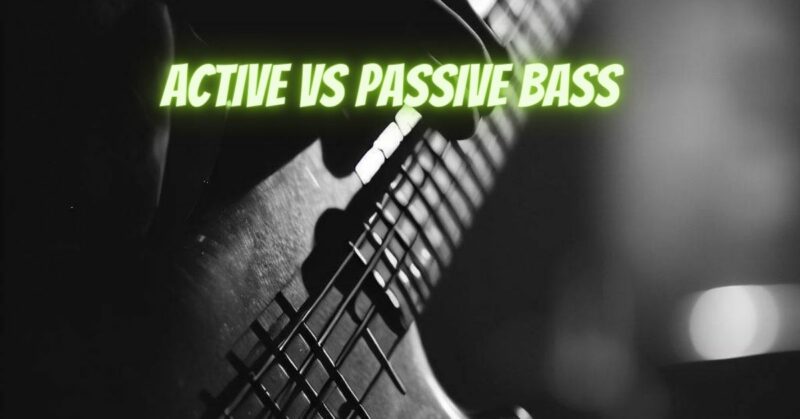The choice between an active and a passive bass guitar is a pivotal decision that shapes the way you express your musical identity. Both active and passive basses have their distinct qualities, offering unique tonal profiles and playability characteristics. In this article, we’ll explore the differences between active and passive bass guitars, helping you make an informed choice based on your musical preferences and playing style.
1. The Heart of the Matter: Active and Passive Electronics
At the core of the active vs. passive debate lie the electronics that define the bass guitar’s sound. Active bass guitars incorporate active electronics, which include onboard preamps and equalization circuits, while passive bass guitars rely on traditional passive electronics without these added features.
2. Tonal Characteristics
- Active Bass: Active bass guitars offer a broader tonal palette due to their onboard preamps and EQ controls. They can provide a wide range of tones, from scooped mids and punchy lows to bright and trebly sounds. Active electronics allow for boosted frequencies and greater tonal shaping capabilities, making them versatile across various musical genres.
- Passive Bass: Passive basses tend to have a more vintage and organic sound. They offer a warm, round tone with a traditional character. While they might lack the tonal versatility of active basses, they excel at producing classic, foundational bass tones that are well-suited for genres like rock, blues, and funk.
3. Output and Signal Strength
- Active Bass: Active bass guitars have a higher output signal due to their onboard preamps. This increased output can be advantageous when playing with other instruments or when using effects pedals, providing a stronger signal to work with.
- Passive Bass: Passive bass guitars have a lower output signal compared to their active counterparts. While this might seem like a limitation, the lower output can be desirable for players seeking a more dynamic response and nuanced expression.
4. Battery Dependence
- Active Bass: Active bass guitars require a battery to power their electronics. Regular battery maintenance is essential to ensure consistent performance. If the battery runs out during a performance, the bass might become inaudible or produce a weaker sound.
- Passive Bass: Passive bass guitars do not rely on batteries for their operation. They can be played without worrying about battery life or power source availability.
5. Playability and Weight
- Active Bass: Active bass guitars often have slightly heavier bodies due to the additional components required for the active electronics. However, some modern designs manage to maintain a reasonable weight.
- Passive Bass: Passive bass guitars tend to be lighter, making them a comfortable option for players who prioritize weight and comfort during extended performances.
6. Personal Preference
Ultimately, the decision between active and passive bass guitars boils down to personal preference and musical style. Consider the genre you play, your tonal aspirations, and your desire for tonal versatility when making your choice.
The active vs. passive debate offers bassists an array of tonal and sonic choices. Active bass guitars provide tonal versatility, boosted output, and a contemporary sound, making them suitable for a wide range of genres. Passive bass guitars, on the other hand, offer classic warmth, organic tones, and a more vintage character. By understanding the distinctive characteristics of each type, you can make an informed decision that aligns with your musical journey, enhancing your ability to express yourself authentically through your chosen instrument.


